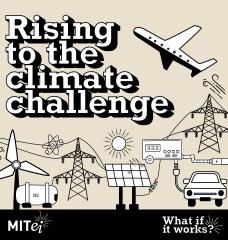
Last month, I attended the American Geophysical Union meeting in New Orleans, where 26,000 geoscientists convened in person and virtually to share the latest Earth and climate science. Maybe a hundred of those people were there to talk about research on solar geoengineering—the idea of reflecting a fraction of incoming sunlight to cool a warming planet.
Contrary to popular belief, research on this topic is anemic; it has been more or less stuck for several years. I saw mothers with dark circles under their eyes presenting on Zoom to nearly empty conference rooms. Scientists from the National Center for Atmospheric Research on the mesa south of Boulder, Colorado, Zoomed in to share updated modeling scenarios; a few weeks later, NCAR would clock 90-mile-per-hour winds in a suburban firestorm that flattened surrounding neighborhoods. At the poster session, I saw the same woman I had seen at an AGU meeting five years ago, waiting to tell someone about her idea for preserving Arctic ice with reflective, hollow glass microspheres. Meanwhile, one aisle over in the Cryosphere area, people were jammed shoulder to shoulder—despite the pandemic—to hear about the collapsing “doomsday” glaciers.
This is the context of the International Solar Geoengineering Non-Use Agreement, proposed by a group of more than 60 senior scholars last week.
A non-use agreement on solar geoengineering sounds great at first glance. Indeed, we should have a moratorium on the use of solar geoengineering, since the concept is so immature and theoretical; the science isn’t there to understand what reflecting sunlight would do to ecosystems, climate, or human systems. Nor is it a new idea: leading researchers proposed such a moratorium nearly 10 years ago in Science. We should also have a ban on patenting technologies, as suggested in this non-use agreement.
The trouble with last week’s proposal is that it fails to adequately distinguish research from development or deployment. It’s a thinly veiled (or maybe not at all veiled) attempt to stifle research on the topic. Last year, the authors wrote a letter to Nature, objecting to an editorial titled “Give research on solar geoengineering a chance.” Their stance: “We call on our governments and funding agencies to halt the normalization of research into planetary solar-geoengineering technologies.”
The non-use agreement doesn’t strictly prohibit “legitimate climate research.” Rather, it calls for a commitment to banning outdoor experiments and prohibiting national funding agencies from “supporting the development” of solar geoengineering technologies, both domestically and through international institutions. The non-use proposal further says that countries should “object to future institutionalization of planetary solar geoengineering as a policy option in relevant international institutions, including assessments by the Intergovernmental Panel on Climate Change.” So we would not be able to know how the foremost body of international scientists appraises the science.
Read the full article at: https://www.technologyreview.com/2022/01/26/1044226/we-cant-afford-to-stop-solar-geoengineering-research/






